Stand Up Comics is a regular column by Adan Jimenez. These titles need no introduction: just read the column, then read some good comics!
 Trees Vol. 1: In Shadow by Warren Ellis and Jason Howard (Image Comics, $14.99, 9781632152701)
Trees Vol. 1: In Shadow by Warren Ellis and Jason Howard (Image Comics, $14.99, 9781632152701)
"...they did nothing and did not speak as if there were no-one here and nothing under foot. Ten years since we learned that there is intelligent life in the universe but that they did not recognize us as intelligent or alive. They stand on the surface of the Earth like trees exerting their silent pressure on the world as if there were no-one here."
Trees is Warren Ellis doing what he does best: old-school science fiction with a creepy undertone about what humanity does once an unexplainable phenomenon becomes the new normal, and how that exposes and amplifies current social problems. With characters in Greece, China, Somaliland, New York and Svalbard in the Arctic Ocean, Ellis explores the ramifications of first contact around the world, even as that first contact presents itself as nothing we ever expected.
Like most science fiction, Trees concerns itself with the social, cultural, political and economic changes that a great planet-wide upheaval like this might instigate, but does not include any kind of adventure narrative (at least not yet) for its characters, unlike Neill Blomkamp's District 9, George Miller's Mad Max: Fury Road or Ann Leckie's Ancillary Justice. Of course, there's nothing wrong with an adventure narrative; it's simply not present here, and the text is better for it.
Handselling Opportunities: Fans of the kind of science fiction that reads like very entertaining new world almanacs instead of adventure stories.
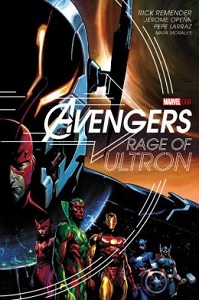 Avengers: Rage of Ultron by Rick Remender, Jerome Opena, Mark Morales and Pepe Larraz (Marvel, $24.99, 9780785190400)
Avengers: Rage of Ultron by Rick Remender, Jerome Opena, Mark Morales and Pepe Larraz (Marvel, $24.99, 9780785190400)
Once upon a time, Hank Pym created life in the form of an artificial intelligence named Ultron. Pym thought Ultron would help him and the Avengers make the world a safer place, but Ultron rebelled and sought to exterminate mankind instead of protect it, so Hank Pym murdered his only son. Ultron survived and attempted to destroy humanity multiple times. Pym was finally forced to shoot his son into space, all the while lamenting that, from the moment he was born, his son never loved him back.
Despite the very similar title, this book has nothing to do with the summer blockbuster. Instead, it is a character study of one of the Avengers' most damaged and multi-faceted members. Hank Pym is a character who has been defined almost exclusively by the failures in his history: beating his wife, creating a genocidal robot and suffering numerous mental breakdowns. But Pym's self-loathing eclipses any loathing others may have for him, including his mad son's, who likely inherited this hatred from his father.
Handselling Opportunities: Anybody looking for a dissection of a pained character preoccupied by the question of what constitutes sentient life, a generational family saga and a cautionary tale about AI.
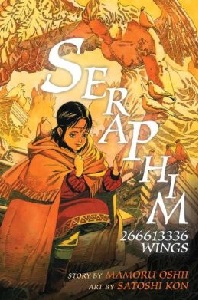 Seraphim: 266613336 Wings by Mamoru Oshii and Satoshi Kon (Dark Horse Comics, $19.99, 9781616556082)
Seraphim: 266613336 Wings by Mamoru Oshii and Satoshi Kon (Dark Horse Comics, $19.99, 9781616556082)
The world is suffering a pandemic unlike any it has ever seen before, one the World Health Organization dubs Seraphim, which poisons the mind with religious hallucinations and twists the body into unearthly shapes. The WHO has chosen three "Wise Men" to go into the quarantine zone in fractured China to search for a cure while escorting a young girl named Sera, who may contain the key to ending the plague.
Even though the manga was written and drawn by two of Japan's most influential anime creators of all time, I almost didn't review this title. It was originally serialized in Animage magazine, but ended because of creative differences, and only this one volume of what looked to be a very expansive story exists. So, as great and interesting as the story is, it's difficult to recommend knowing we will never see an ending, and will be forever dissatisfied.
However, the real prize is the essay after the story by Carl Gustav Horn; an essay not just on Oshii and Kon and their partnership, but on manga, anime, the culture that surrounds it and the history of it in the U.S. This essay is worth the price of admission, so think of this volume as a fantastic cultural essay that happens to include a fantastic unfinished collaboration by two masters.
Handselling Opportunities: Fans of Oshii or Kon, and anybody interested in learning about the early U.S. otaku (fans of manga/anime) scene.
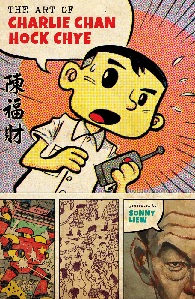 The Art of Charlie Chan Hock Chye by Sonny Liew (Epigram Books, $34.90, 9789810731069)
The Art of Charlie Chan Hock Chye by Sonny Liew (Epigram Books, $34.90, 9789810731069)
Charlie Chan Hock Chye describes himself as Singapore's greatest comics artist in an interview from the opening pages of this book, an assertion that is difficult to argue against, as the man has been creating comics since 1956, nine years before Singapore's independence. However, because of various historical and economic factors, Charlie Chan remained mostly unknown throughout his career. It didn't help that many of his comics were either self-published and therefore difficult to track down, or not published at all.
Liew has created a work that encompasses biography, art book, history and political commentary in one ambitious tome. Chan's history is recounted alongside that of Singapore's, while most of his artwork is reproduced, much of it for the first time ever. The political commentary comes from the fact that any history that does not hew to the Singapore government's official story is automatically political, best exemplified during a sequence that features Chan's unpublished Sinkapor Inks strips, in which Singapore in the '70s is reimagined as a stationery supply company, alongside Liew's own running commentary on what government policy each strip is lampooning. The cartoon Liew gets increasingly agitated as "Sinkapor Inks" institutes more and more draconian measures to curb press freedoms.
Handselling Opportunities: Anybody interested in a personal view of Singapore's history before it's available to most American audiences (Pantheon will be publishing this in the U.S. next year).
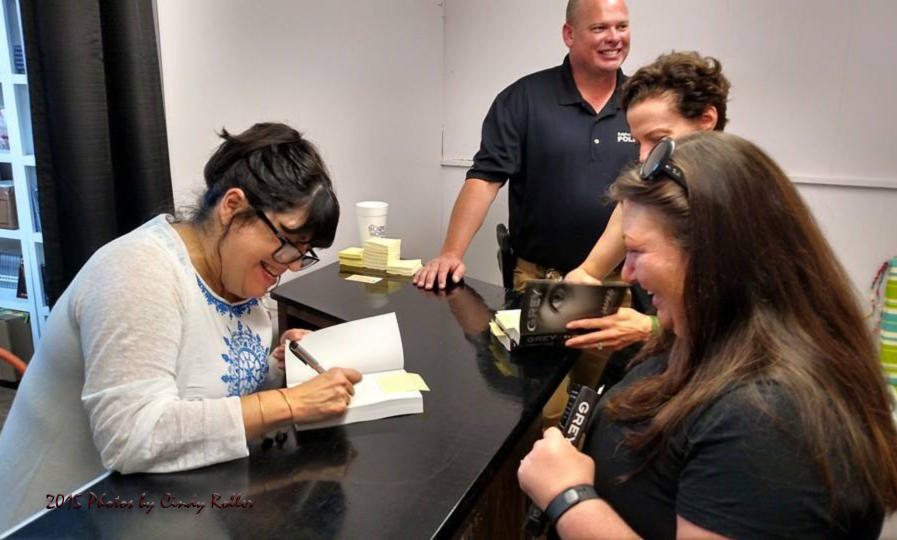



SHELFAWARENESS.1222.S1.BESTADSWEBINAR.gif)


SHELFAWARENESS.1222.T1.BESTADSWEBINAR.gif)

 Pushkin Press is "one of the founding partners of the new
Pushkin Press is "one of the founding partners of the new  City Lights itself: "Perhaps the literary sight to see, City Lights Books is located next to Vesuvio Cafe and is known for its historic support and publication of paperback titles by poets and writers such as Allen Ginsberg, Frank O'Hara, and Jack Kerouac. Katzenberger describes City Lights as 'a center of gravity,' a place where other writers could gather and feel comfortable. According to Katzenberger, the store also carries unusual books, ones not always found on the bestseller list. 'Here you find things you just didn't know existed,' she says."
City Lights itself: "Perhaps the literary sight to see, City Lights Books is located next to Vesuvio Cafe and is known for its historic support and publication of paperback titles by poets and writers such as Allen Ginsberg, Frank O'Hara, and Jack Kerouac. Katzenberger describes City Lights as 'a center of gravity,' a place where other writers could gather and feel comfortable. According to Katzenberger, the store also carries unusual books, ones not always found on the bestseller list. 'Here you find things you just didn't know existed,' she says." The Boy Is Gone: Conversations with a Mau Mau General
The Boy Is Gone: Conversations with a Mau Mau General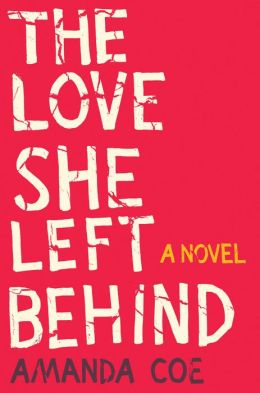 A dead woman is the central character of The Love She Left Behind by British author Amanda Coe (
A dead woman is the central character of The Love She Left Behind by British author Amanda Coe (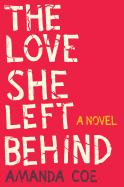
 Trees Vol. 1: In Shadow by Warren Ellis and Jason Howard (Image Comics, $14.99, 9781632152701)
Trees Vol. 1: In Shadow by Warren Ellis and Jason Howard (Image Comics, $14.99, 9781632152701) Avengers: Rage of Ultron by Rick Remender, Jerome Opena, Mark Morales and Pepe Larraz (Marvel, $24.99, 9780785190400)
Avengers: Rage of Ultron by Rick Remender, Jerome Opena, Mark Morales and Pepe Larraz (Marvel, $24.99, 9780785190400) Seraphim: 266613336 Wings by Mamoru Oshii and Satoshi Kon (Dark Horse Comics, $19.99, 9781616556082)
Seraphim: 266613336 Wings by Mamoru Oshii and Satoshi Kon (Dark Horse Comics, $19.99, 9781616556082) The Art of Charlie Chan Hock Chye by Sonny Liew (Epigram Books, $34.90, 9789810731069)
The Art of Charlie Chan Hock Chye by Sonny Liew (Epigram Books, $34.90, 9789810731069)